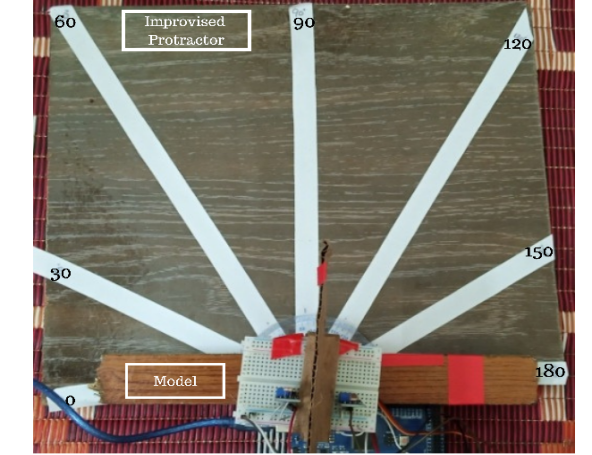Sun Tracking and Control Design for PV Solar energy system
Keywords:
PCRET, IAA, Air UniversityAbstract
In this modern era of the rapid increase in population, a high rise in technology, and a large number of machinery installed, fuel demand has increased significantly. Non-renewable energies contribute a lot to producing energy worldwide, and that's why they are decreasing at an alarming rate. As an alternative, renewable energies have a high potential to solve this upcoming issue. In this paper, sunlight is utilized for the location of Islamabad, and an active solar tracker is designed. The objective is to develop a cost-effective system with low maintenance requirements. The tracking mechanism is modeled by two sensors, LDR and PV sensor. LDR sensor generates high resistance when light is incident on them, thus reducing the voltage production. PV sensors produce a voltage when sunlight is incident on them, and a voltage drop occurs if a shadow occurs. A thin plate between two LDR sensors or two PV sensors will cast a shadow according to the sun's position. It will create a voltage difference between the two sides, thus causing the system to track the sun. For smooth movement, a servomotor is an effective choice. The system is integrated with a microcontroller for a feedback system of output; Arduino Uno will regulate the uniform and accurate movement of the system. The research on azimuth and elevation angles for the location of an installment is also included in this paper. Different tests are performed for comparative study for both sensors to have performance analysis.
References
M. O. KARAAGAC, H. OĞUL, and F. BULUT, “Sinop İli Koşullarında Monokristal ve Polikristal Fotovoltaik Panellerin Değerlendirilmesi,” Türk Doğa ve Fen Derg., no. June, pp. 176–181, 2021, doi: 10.46810/tdfd.855488.
S. Battersby, “News Feature: The solar cell of the future,” Proc. Natl. Acad. Sci. U. S. A., vol. 116, no. 1, pp. 7–10, Jan. 2019, doi: 10.1073/PNAS.1820406116.
Y. Rambhowan and V. Oree, “Improving the dual-axis solar tracking system efficiency via drive power consumption optimization,” Appl. Sol. Energy 2014 502, vol. 50, no. 2, pp. 74–80, Aug. 2014, doi: 10.3103/S0003701X1402011X.
A. Mohammed and A. Hanieh, “Automatic Orientation of Solar Photovoltaic Panels,” no. February, 2015.
“PD: 3D Sun-Path.”
N. H. Shah, “Aurdino based wireless display board using gsm technology,” no. February 2018, 2020.
L. Louis, “Working Principle of Arduino and Using it as a Tool for Study and Research,” Int. J. Control. Autom. Commun. Syst., vol. 1, no. 2, pp. 21–29, 2016, doi: 10.5121/ijcacs.2016.1203.
“What is Servo Motor?- Definition, Working And Types - Engineering Choice.”
J. A. H. Mazhar. S, Nafeh. A, “Prospects of Biosynthetically produced Nanoparticles in Biocontrol of Pests and Phytopathogens: A review,” Int. J. Innov. Sci. Technol., vol. 4, no. 2, pp. 552–563, 2022.
“In-Depth: Interface L298N DC Motor Driver Module with Arduino.”
“L298N Motor Driver Module Pinout, Datasheet, Features & Specs.”
“Buck Converter: Basics, Working, Design and Operation.”

Published
How to Cite
Issue
Section
License
Copyright (c) 2022 50sea

This work is licensed under a Creative Commons Attribution 4.0 International License.




















